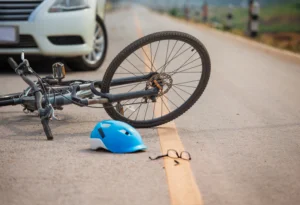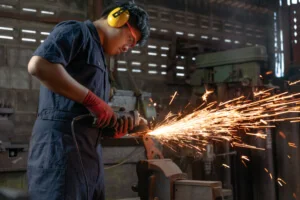Sports Injury Claims
Specialist Sports Injury Lawyers
Have you suffered a sports injury in an accident that could have been prevented or was the result of negligence? Osbornes Law have handled hundreds of sports injury claims. We specialise in serious injury claims. Read on to find out how we can help and more about making a claim.
Table of Contents
Can you claim for a Sports Injury?
Osbornes Law specialises in sports injury claims. Our expert personal injury lawyers represent people who sustain an avoidable injury in sporting accidents, from professional sportsmen and women to 5-a-side footballers and weekend horse riders. So if you were injured in a horror tackle in a rugby match, by a malfunctioning gym machine or by a potholed soccer pitch you might want to get some legal advice.
Our team of sports injury lawyers will fight to get you the compensation you are entitled to at no cost to you. We are experienced at doing this as quickly and efficiently as possible, allowing you to concentrate on recovering from your accident during what can be a very stressful time.
These cases are not straightforward. To succeed, it is necessary to prove negligence. This may be the negligence of another player (although if the case involves a bad tackle it usually needs to be reckless and dangerous as well), the negligence of a trainer or instructor or that of the individual or organisation responsible for planning or supervising the event. Proof is necessary in the form of evidence, so we will need to discuss the circumstances of the accident with you in some detail to work out whether witnesses or documents will establish the case in negligence.
How much compensation can I claim for a sports injury?
The value of any sports injury claim will depend on the seriousness of the sports injury and its effect on your everyday life. So the Premier League footballer who retires from the game at age 21 may have a multi-million-pound claim whereas the broken finger that keeps the fitness addict out of the gym for two months may only be worth two or three thousand pounds. Whether it’s extreme sports or a family skiing accident, our job is to obtain the evidence to maximise the sports injury claim in the minimum time frame.
How much does it cost to make a sports injury claim?
The majority of personal injury cases are handled on a no win, no fee basis. This means that you won’t have to pay any upfront legal fees to start your claim. Instead, your solicitor’s fees will be deducted from the compensation awarded if the case is successful.
What types of sports injuries can I claim for?
We have helped clients claim compensation for a wide range of sports injuries including:
- Ankle Injury Claims
- Arm Injury Claims
- Back Injury Claims
- Elbow Injury Claims
- Finger Injury Claims
- Hand Injury Claims
- Hip Injury Claims
- Knee Injury Claims
- Leg Injury Claims
- Neck Injury Claims
- Shoulder Injury Claims
- Wrist Injury Claims
Contact Osbornes Law to start your claim
At Osbornes Law, we understand the impact a sports injury can have on your life. Our team of dedicated personal injury solicitors will guide you through the process of claiming compensation for your personal injury. We’re committed to ensuring that you receive the maximum compensation for your injuries. Call 020 7485 8811 or fill in the contact form below.
Osbornes Law is a really strong team with a lot of depth.
Osbornes work professionally as a team, responding diligently to emails or telephone calls.
Specialises in quantum-related matters in addition to sports and cycling injuries cases.
Osbornes clients are individuals whose cases are treated with the focus required when dealing with life changing injuries.
Fielding a ‘first class, very well resourced’ team of litigators, the personal injury department at Osbornes is rated for its diverse workload of complex, high-value injury claims, representing both domestic and international claimants.
Osbornes is an excellent firm, made up of lawyers with flair and pedigree.
Osbornes lawyers are smart, well trained, experienced and well managed.
Osbornes personal injury practice is first class; very well resourced and second to none.
Osbornes is becoming one of the top players in the claimant personal injury market. A large team with a great number of very high quality solicitors.
Osbornes is a highly proficient serious injury firm. They bring all the benefits of the biggest firms in the market but none of the downsides.
Osbornes prepares cases well; the whole team is good and lawyers there know their stuff.
They deal with people compassionately and take on the right amount of detail. The firm has some really brilliant key solicitors.
The personal injury team is responsive and its level of service towards clients and other professionals is exceptional and high quality
The team offers specialist expertise in cycling-related injury claims and regularly acts for foreign nationals.
It has considerable experience in cases arising from motor accidents and accidents at work
Osbornes is a well-regarded personal injury practice well equipped to advise on high-value and high-profile claims.
Their team includes bright, hard-working solicitors dedicated to achieving successful outcomes for their clients from partner level to paralegal. Their client care is exceptional.
They are a team who are highly respected in the PI sector.
This is an excellent PI team doing a broad range of PI work.
Osbornes’ ‘highly respected‘ personal injury team is experienced in a range of complex, high-value claims, with notable strength in acting for European clients for whom English is not a first language.
Osbornes’ ‘highly respected‘ personal injury team is experienced in a range of complex, high-value claims
Osbornes’ ‘highly respected‘ personal injury team is experienced in a range of complex, high-value claims.
"They punch well above their weight. The quality of service they provide equals that of any of the larger top-name firms in this area"
Ben Posford is fiercely bright, with an unrivalled passion for his clients’ cases. His encyclopaedic knowledge of all things PI is second to none. His foresight and commercial nous have propelled Osbornes into the highest echelons of the market where they rightly belong.
The firm has an excellent and innovative line in cases involving non-English speaking claimants, managed by recruiting paralegals with multi-language skills – an impressive route for expansion of the caseload.
Great expanding team with expertise and respect in the sector. Led by a commercially savvy and business minded team.
A really excellent group of PI solicitors, notable for their individual quality.’
A niche firm that punches well above its weight in the catastrophic injury sector, borne out by the quality of work they obtain.
This combination of experience and diligence reaps massive rewards for clients, Osbornes being well known in the industry as a fantastic firm.
The Osbornes personal injury team now comprises some of the most technically adept and hard hitting lawyers in the business.
Excellent coverage of personal injury, and traumatic brain injury. There is a real specialism in claimants who do not speak English as a first language.
The group is noted for its expertise in matters relating to cycling injuries, and is the official legal partner of the London Cycling Campaign charity.
To complement its strong reputation for high-value and complex personal injury work, the firm continues to develop its 'excellent and innovative line in cases involving non-English speaking claimants'
"Osbornes comprises some of the most technically adept and hard hitting lawyers in the business"
"A small but high-powered team, dealing with cases of significant value and complexity."
"An excellent firm which achieves fantastic outcomes for clients."
"Osbornes Law have captured the magic of keeping the customer service levels of a smaller firm whilst having all the expertise and power of the biggest firms."
"A superb boutique catastrophic injury firm."
"Really good at dealing with people who have suffered a serious injury."
"Affable and charming with very good client-handling skills."
"superb firm with consummate professionals and a human touch."
Osbornes now has a team of highly experienced personal injury lawyers; particularly strong on high-value quantum cases, workplace accidents and claims involving foreign workers injured in the UK.
The team provides fantastic strength-in-depth for personal injury claims. It is also particularly well placed to service clients from Eastern Europe with specialist native language speakers. From the smallest case to a multimillion-pound spinal injury case, Osbornes has the right staff to manage every claim.
Ben Posford remains pre-eminent in his field with expert understanding of litigating cases of the upmost severity. His experience builds on Stuart Kightley’s running of the firm with recent partner additions of Rob Aylott making a fantastic addition.
A firm going from strength-to strength-which retains its client care whilst being able to offer a full personal injury service.
Beneath Ben Posford’s calm and reassuring presence, which clients love, lies a formidable tactical and legal brain. His experience tells and he gets it right at every stage of the process from arranging the best possible rehabilitation, to ensuring, so far as possible, a polite relationship with those acting for the defendant in order to ensure best and early resolution of the claim.
"Clients say he is very impressive, in terms of both his experience and his management of the personal injury team."
"They have an expanding profile in personal injury and clinical negligence and offer a superb, broad service in accidents abroad, enabled by their recruitment of bilingual legal executives who can guide non-English speakers through complex litigation."
"Solid personal injury practice well equipped to advise on high-value and high-profile claims arising from fatalities and severe head and spinal injuries."
"Offers specialist expertise in cycling-related injury claims."
"Offers specialist expertise in cauda equina syndrome cases."
"An exceptional outfit. They take on difficult cases, fight hard and win."
"Stuart Kightley is an incredibly empathetic solicitor who is very knowledgeable about traumatic brain injury."
"They are an outstanding firm to work with. They are consistently impressive in their work."
"Osbornes often handles claims valued at over £1m, particularly relating to severe brain and spinal cord injuries and niche areas such as cauda equina syndrome and cycling accidents."
"The hard-working, thorough and committed Robert Aylott, who brings significant heavyweight personal injury experience."
"Key team members include the energetic and personable Stuart Kightley who is head of the personal injury department."
Thank you for the hard work and patience and for being so patient with my constant questions.
"I have found Osbornes to be thorough, clear and understanding from the initial call. They do exactly what they say they will and with passion! I would recommend them to anyone".
Very good efficient service. Would not hesitate to use again.
I will use Osbornes for any future needs.
I don't think I could have asked for anything more. One of the best dealings I've had with the legal profession.
Sam was excellent and very professional in dealing with our claim.
Head of the personal injury department, Stuart Kightley is a first-rate practitioner, wholly focused on getting his client the best outcome in a pragmatic, sensible and consensual manner.
As a real specialist in spinal cord injuries, Ben Posford is always looking at new angles on how to maximise his cases.
Ben Posford is one of the best catastrophic injury lawyers around.
They provide exceptional service, great knowledge and understanding of the law, excellent client care and tactical nous
Stuart Kightley is praised for his expertise in catastrophic and fatal claims. Clients say he is very impressive, in terms of both his experience and his management of the personal injury team.
My claim was dealt with efficiently and professionally. Communication was excellent, and timely. Shrewd and sound advice was provided at every stage of the claim from beginning through to completion. On the basis of my personal experience I would strongly recommend Osbornes.
I just wish to thank you for your hard work and successful outcome. I am pleased with the result and would recommend you and your firm to anyone in the future.
Ben Posford … is ‘tactically astute’ and ‘one of the best personal injury solicitors around’.
Ben Posford ‘knows how to maximise the value of the claim for his clients’.
Client Stories & InsightsVIEW ALL
- 9.7.2025
Warehouse Worker Fights Aldi’s False Dishonesty Claims
Aldi’s worker suffers ‘mental torture’ after the supermarket giant falsely accuses him of lying In a shocking case that...
Read more - 19.6.2025
Osbornes Law Secures £200K for Injured Cyclist
Osbornes Law secures a six-figure settlement for a cyclist injured following a violent collision Andrew Middlehurst, a lawyer in the...
Read more - 5.6.2025
Migrant Workers Face Greater Risk of Workplace Accidents
Why migrant workers face greater risk of workplace accidents? Foreign workers in the UK are statistically more likely to experience...
Read more - 28.5.2025
Social Media’s Impact On Personal Injury Claims
The impact of social media on personal injury claims We live in an era where the internet plays a significant...
Read more - 9.4.2025
£11k Settlement for Cyclist Hit by a Truck
Settlement secured for a cyclist injured by a truck Megan Lambert recently secured a settlement for a member of the...
Read more - 6.2.2025
Bus Injury Compensation: £7,800 Awarded
Osbornes secures a compensation for a client injured after being victim of a bus driver`s negligence Compensation was recently...
Read more - 31.1.2025
Six-figure settlement for mum knocked over by a...
Six-figure settlement for young mum on school run knocked over by a motorcyclist Siobhan McIvor, Partner in the Personal Injury...
Read more - 17.1.2025
Student Makes Electrocution Compensation Claim
Student’s heart stopped after electrocution in London’s St James’ Park A university student had a heart attack and...
Read more - 19.12.2024
Seven-figure Settlement for Car Accident in Spain
Background to the Accident Isidoro Bonilla recently represent his client who sustained serious injuries following a car crash in Spain....
Read more - 19.12.2024
Claim for Car Accident in Croatia
Background to the accident Isidoro Bonilla recently advised his client who sustained serious injuries in a car accident. His client,...
Read more - 26.11.2024
Cyclist Hit by Van Driver Claims Compensation
Cyclist Injured in Van Collision Receives Settlement Phoebe Walliss, a solicitor at Osbornes Law, recently secured a settlement for a...
Read more - 22.10.2024
£75,000 Settlement for Head Injury at College
Accident During a College Class Eloise Mears, Solicitor at Osbornes Law, represented a student who sustained a head injury while...
Read more - 22.10.2024
£150k for Pedestrian Knocked Over By Learner Driver
Accident Involving a Learner Driver Eloise Mears, Solicitor at Osbornes Law, acted for a successful young professional who was severely...
Read more - 22.10.2024
Slip & fall in church
Accident and Injuries Eloise Mears, Solicitor at Osbornes Law, represented a 68-year-old man who suffered a fall while visiting a...
Read more - 22.10.2024
Cyclist Injury Claim Successfully Settled for £75,000
Cyclist hit by van driver Eloise Mears, a solicitor at Osbornes Law, recently secured a £75,000 settlement for a cyclist who...
Read more - 23.9.2024
High Court Ruling: English Law in Multi-Vehicle Collision
High Court victory Siobhan McIvor, Partner in the Personal Injury Department, has succeeded in obtaining judgment for her seriously injured...
Read more - 6.8.2024
Pedestrian Claims £25,0000 for E-Scooter Collision
Pedestrian hit by an e-scooter rider claims £25,000 Andrew Middlehurst, a lawyer specialising in e-scooter claims at Osbornes Law, recently settled...
Read more - 25.7.2024
Cycling Accident Claims: Client Stories
Below are details of various cases handled by Osbornes specialist cycle accident claims team including the payouts clients have received...
Read more - 25.7.2024
Claim By Cyclist Hit By Car at Junction
Payout for Cyclist Who Was Knocked Off Her Bicycle Cycling accident lawyer, Phoebe Walliss recently settled a claim for a...
Read more - 29.4.2024
£75k Payout For a Cyclist Knocked Over By...
Claim settled for a cyclist who was struck by a car Laura Swaine recently settled a claim for a cyclist...
Read more - 29.4.2024
230k Payout For London Cyclist Struck By a...
Six-figure settlement for a cyclist knocked over by a car Laura Swaine recently settled a personal injury claim for a...
Read more - 29.4.2024
Cyclist struck by a car obtains a £40k...
Laura Swaine recently settled a claim for a cyclist who was struck by a car from behind. Laura was able...
Read more - 29.4.2024
Settlement After Fatal Accident At a Roundabout
Fatal claim settled for a cyclist struck by a truck Laura Swaine recently settled a fatal accident claim for a...
Read more - 29.4.2024
Claim Settled For a Cyclist Struck By a...
Cyclist obtains a settlement after being struck by a car Laura Swaine recently settled a claim for a cyclist who...
Read more
Our Personal Injury Team View the whole team
Rob Aylott
 Partner
Partner
Personal Injury SolicitorsSam Collard
 Partner
Partner
Personal Injury SolicitorsSophie Davies
 Partner
Partner
Personal Injury SolicitorsLaura Swaine
 Partner
Partner
Personal Injury SolicitorsNicola Hall
 Senior Associate
Senior Associate
Personal Injury SolicitorsAndrew Middlehurst
 Senior Associate
Senior Associate
Personal Injury SolicitorsView the
whole team


































